Effect of Chemical Fertilizer Application on Maize Production in China over the Past 15 Years: A Meta-Analysis
Abstract
:1. Introduction
2. Methods
2.1. Data Collection and Collation
2.2. Calculation of Fertilizer-Use Efficiency (FUE)
2.3. Meta-Analysis
2.4. Scenario Analyses on the Carbon Footprint of Chemical Fertilization in Maize Production
- (1)
- Unchanged N, P, and K application rates.
- (2)
- A 0% increase in N fertilization with a 10% increase in P and K fertilization.
- (3)
- A 10% reduction in N fertilization with a 10% increase in P and K fertilization.
- (4)
- A 10% reduction in N, P, and K fertilization.
2.5. Data Analysis
3. Results
3.1. Effects of N Fertilization Level on Maize Yield and the FUE of N Fertilizers
3.2. The Effects of P Fertilization Levels on Maize Yield and the FUE of P Fertilizers
3.3. The Effects of K Fertilization Level on Maize Yields and the FUE of K Fertilizers
3.4. Potential Yield Enhancements and Emission Reductions via the Variation of Chemical Fertilization Rates
4. Discussion
4.1. Response of Maize Yield to Chemical Fertilization in Each Geographic Region
4.2. Response of Maize Yield and FUE to Vary Chemical Fertilization Levels in Different Periods
4.3. Potential for Maize Yield Enhancement and GHG Emission Reduction in China
5. Conclusions
Author Contributions
Funding
Institutional Review Board Statement
Informed Consent Statement
Data Availability Statement
Conflicts of Interest
References
- Xu, Z.; Li, C.J.; Zhang, C.C.; Yu, Y.; van der Werf, W.; Zhang, F.S. Intercropping maize and soybean increases efficiency of land and fertilizer nitrogen use; A meta-analysis. Field Crop Res. 2020, 246, 107661. [Google Scholar] [CrossRef]
- Good, A.G.; Shrawat, A.K.; Muench, D.G. Can less yield more? Is reducing nutrient input into the environment compatible with maintaining crop production? Trends Plant Sci. 2004, 9, 597–605. [Google Scholar] [CrossRef] [PubMed]
- Wu, L.Q.; Wu, L.; Cui, Z.L.; Chen, X.P.; Zhang, F.S. Basic NPK fertilizer recommendation and fertilizer formula for maize production regions in China. Acta Pedol. Sin. 2015, 52, 802–817. (In Chinese) [Google Scholar] [CrossRef]
- Du, Y.D.; Cui, B.B.; Zhang, Q.; Wang, Z.; Sun, J.; Niu, W.Q. Effects of manure fertilizer on crop yield and soil properties in China: A meta-analysis. Catena 2020, 193, 104617. [Google Scholar] [CrossRef]
- Liu, X.J.; Zhang, Y.; Han, W.X.; Tang, A.H.; Shen, J.J.; Cui, Z.L.; Vitousek, P.; Erisman, J.W.; Goulding, K.; Christie, P.; et al. Enhanced nitrogen deposition over China. Nature 2013, 494, 459–462. [Google Scholar] [CrossRef]
- Zhang, Z.J.; Shi, X.; Ling, T. Influencing factors and empirical test of spatial variation of fertilizer application intensity in China. J. Shanxi Agric. Univ. 2022, 21, 10–19. (In Chinese) [Google Scholar]
- Zhou, M.H.; Zhu, B.; Wang, S.J.; Zhu, X.Y.; Vereecken, H.; Brüggemann, N. Stimulation of N2O emission by manure application to agricultural soils may largely offset carbon benefits: A global meta-analysis. Glob. Chang. Biol. 2017, 23, 4068–4083. [Google Scholar] [CrossRef]
- Lv, F.L.; Song, J.S.; Giltrap, D.; Feng, Y.T.; Yang, X.Y.; Zhang, S.L. Crop yield and N2O emission affected by long-term organic manure substitution fertilizer under winter wheat-summer maize cropping system. Sci. Total Environ. 2020, 732, 139321. [Google Scholar] [CrossRef]
- Perkins, R. Farming and global warming. Vet. Rec. 2019, 185, 542–543. [Google Scholar] [CrossRef]
- Zhang, D.; Shen, J.B.; Zhang, F.S.; Li, Y.E.; Zhang, W.F. Carbon footprint of grain production in China. Sci. Rep. 2017, 7, 4126. [Google Scholar] [CrossRef] [Green Version]
- Wang, Y.Q.; Pu, C.; Zhao, X.; Wang, X.; Liu, S.L.; Zhang, H.L. Historical dynamics and future trends of carbon footprint of wheat and maize in China. Resour. Sci. 2018, 40, 1800–1811. (In Chinese) [Google Scholar] [CrossRef]
- Makowski, D.; Piraux, F.; Brun, F. Basic concepts in meta-analysis. In From Experimental Network to Meta-Analysis: Methods and Applications with R for Agronomic and Environmental Sciences; Springer: Dordrecht, The Netherlands, 2019; pp. 105–126. [Google Scholar]
- Wang, L.L.; Coulter, J.A.; Li, L.L.; Luo, Z.Z.; Chen, Y.L.; Deng, X.P.; Xie, J.H. Plastic mulching reduces nitrogen footprint of food crops in China: A meta-analysis. Sci. Total Environ. 2020, 748, 141479. [Google Scholar] [CrossRef] [PubMed]
- Hou, P.; Liu, Y.E.; Liu, W.M.; Liu, G.Z.; Xie, R.Z.; Wang, K.R.; Ming, B.; Wang, Y.H.; Zhao, R.L.; Zhang, W.J.; et al. How to increase maize production without extra nitrogen input. Resour. Conserv. Recycl. 2020, 160, 104913. [Google Scholar] [CrossRef]
- Liu, W.M.; Hou, P.; Liu, G.Z.; Yang, Y.S.; Guo, X.X.; Ming, B.; Xie, R.Z.; Wang, K.R.; Liu, Y.E.; Li, S.K. Contribution of total dry matter and harvest index to maize grain yield—A multisource data analysis. Food Energy Secur. 2020, 9, e256. [Google Scholar] [CrossRef]
- Chuan, L.M.; He, P.; Zhao, T.K.; Zheng, H.G.; Xu, X.X. Agronomic characteristics related to grain yield and nutrient use efficiency for wheat production in China. PLoS ONE 2016, 11, e162802. [Google Scholar] [CrossRef] [Green Version]
- van Groenigen, K.J.; Osenberg, C.W.; Hungate, B.A. Increased soil emissions of potent greenhouse gases under increased atmospheric CO2. Nature 2011, 475, 214–216. [Google Scholar] [CrossRef]
- Hedges, L.V.; Gurevitch, J.; Curtis, S.P. The meta-analysis of response ratios in experimental ecology. Ecology 1999, 80, 1150–1156. [Google Scholar] [CrossRef]
- PDNDRC. The Prices Division of National Development and Reform Commission. In National Compilation of Agricultural Cost Information Returns; China Statistics Press: Beijing, China, 2006–2019. Available online: http://jgrz.ndrc.gov.cn/(In Chinese). (accessed on 20 October 2020). (In Chinese)
- Huang, Y.; Sun, W.J. Changes of soil organic carbon content in farmland in mainland China in recent 20 years. Chin. Sci. Bull. 2006, 51, 750–763. [Google Scholar] [CrossRef]
- Zhu, M.K.; Yang, S.Q.; Ai, S.H.; Ai, X.Y.; Jiang, X.; Chen, J.; Li, R.R.; Ai, Y.W. Artificial soil nutrient, aggregate stability and soil quality index of restored cut slopes along altitude gradient in southwest China. Chemosphere 2020, 246, 125687. [Google Scholar] [CrossRef]
- Gu, W.T.; Jin, W.J.; Yang, T.L.W.; Liu, R.Y.; Li, W.J.; Dong, X.C. Distribution characteristics of soil nutrients and salt content of Northwest Arid Region in China—Taking the industrial park in Gansu as an example. Chin. Agric. Sci. Bull. 2015, 31, 212–215. Available online: http://www.casb.org.cn (accessed on 15 October 2020). (In Chinese).
- Zhou, L.H.; Huang, J.; Wang, B.R.; Li, D.C.; Liu, K.L.; Han, T.F.; Zhang, H.M. Response of acidifing red soil to liming in potassium leaching in South China. Acta Pedol. Sin. 2020, 57, 457–467. (In Chinese) [Google Scholar] [CrossRef]
- Kong, X.B. China must protect high-quality arable land. Nature 2014, 506, 7. [Google Scholar] [CrossRef]
- Zhang, W.F.; Ma, L.; Huang, G.Q.; Wu, L.; Chen, X.P.; Zhang, F.S. The development and contribution of nitrogenous fertilizer in China and challenges faced by the country. Sci. Agric. Sin. 2013, 46, 3161–3171. (In Chinese) [Google Scholar] [CrossRef]
- Han, J.N.; Wang, L.F.; Zheng, H.Y.; Pan, X.Y.; Li, H.Y.; Chen, F.J.; Li, X.X. ZD958 is a low-nitrogen-efficient maize hybrid at the seedling stage among five maize and two teosinte lines. Planta 2015, 242, 935–949. [Google Scholar] [CrossRef]
- Yang, Y.S.; Xu, W.J.; Hou, P.; Liu, G.Z.; Liu, W.M.; Wang, Y.H.; Zhao, R.L.; Ming, B.; Xie, R.Z.; Wang, K.R.; et al. Improving maize grain yield by matching maize growth and solar radiation. Sci. Rep. 2019, 9, 3635. [Google Scholar] [CrossRef] [PubMed] [Green Version]
- Zhao, Q.Y.; Xu, S.J.; Zhang, W.S.; Zhang, Z.; Yao, Z.; Chen, X.P.; Zou, C.Q. Spatial regional variability and influential factors of soil fertilities in the major regions of maize production of China. Sci. Agric. Sin. 2020, 53, 3120–3133. (In Chinese) [Google Scholar] [CrossRef]
- Liu, Q.P. Spatio-temporal changes of fertilization intensity and environmental safety thresh-old in China. Trans. Chin. Soc. Agric. Eng. 2017, 33, 214–221. [Google Scholar]
- Deng, M.J.; Deng, J.J.; Liu, J.Y. On the space-time evolution of carbon emissions and reduction potential in Chinese grain crop fertilizer application. Resour. Sci. 2016, 38, 534–544. (In Chinese) [Google Scholar] [CrossRef]
- Wang, C.; Zang, H.D.; Liu, J.G.; Shi, X.Y.; Li, S.; Chen, F.; Chu, Q.Q. Optimum nitrogen rate to maintain sustainable potato production and improve nitrogen use efficiency at a regional scale in China. A meta-analysis. Agron. Sustain. Dev. 2020, 40, 37. [Google Scholar] [CrossRef]
- Li, Q.; Kong, F.L.; Wu, Y.W.; Feng, D.J.; Yuan, J.C. Increasing nitrogen accumulation and reducing nitrogen loss with N-efficient maize cultivars. Plant Prod. Sci. 2020, 23, 260–269. [Google Scholar] [CrossRef] [Green Version]
- Huang, Y.; Cao, G.J.; Geng, Y.H.; Han, Y.Y. Effects of precipitation and phosphorus application rate on yield and phosphorus absorption and utilization of maize in black soil region. J. Maize Sci. 2018, 26, 142–148. (In Chinese) [Google Scholar] [CrossRef]
- Li, G.; Bai, Y.L.; Yang, L.P.; Lu, Y.L.; Wang, L.L.; Zhang, J.J.; Zhang, Y.J. Effect of drip fertigation on summer maize in North China. Sci. Agric. Sin. 2019, 52, 1930–1941. [Google Scholar]
- Guo, Y.Q.; Zhang, J.W.; Liu, K.; Zhu, Y.L.; Pei, S.J.; Dong, S.T.; Liu, P.; Zhao, B. Effects of water-potassium interaction on yield and potassium utilization of high-yield summer maize. J. Soil Water Conserv. 2016, 30, 267–271. (In Chinese) [Google Scholar] [CrossRef]
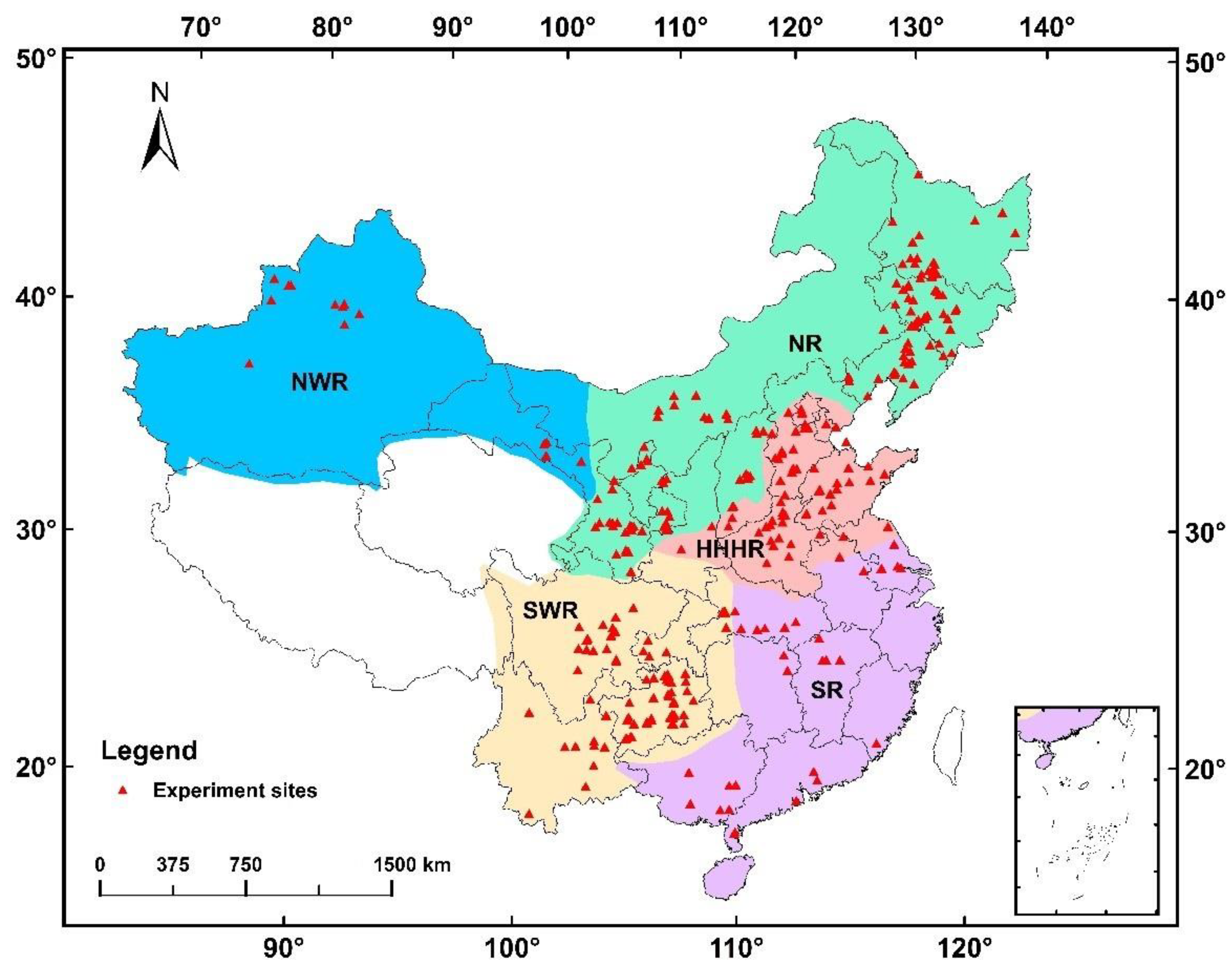
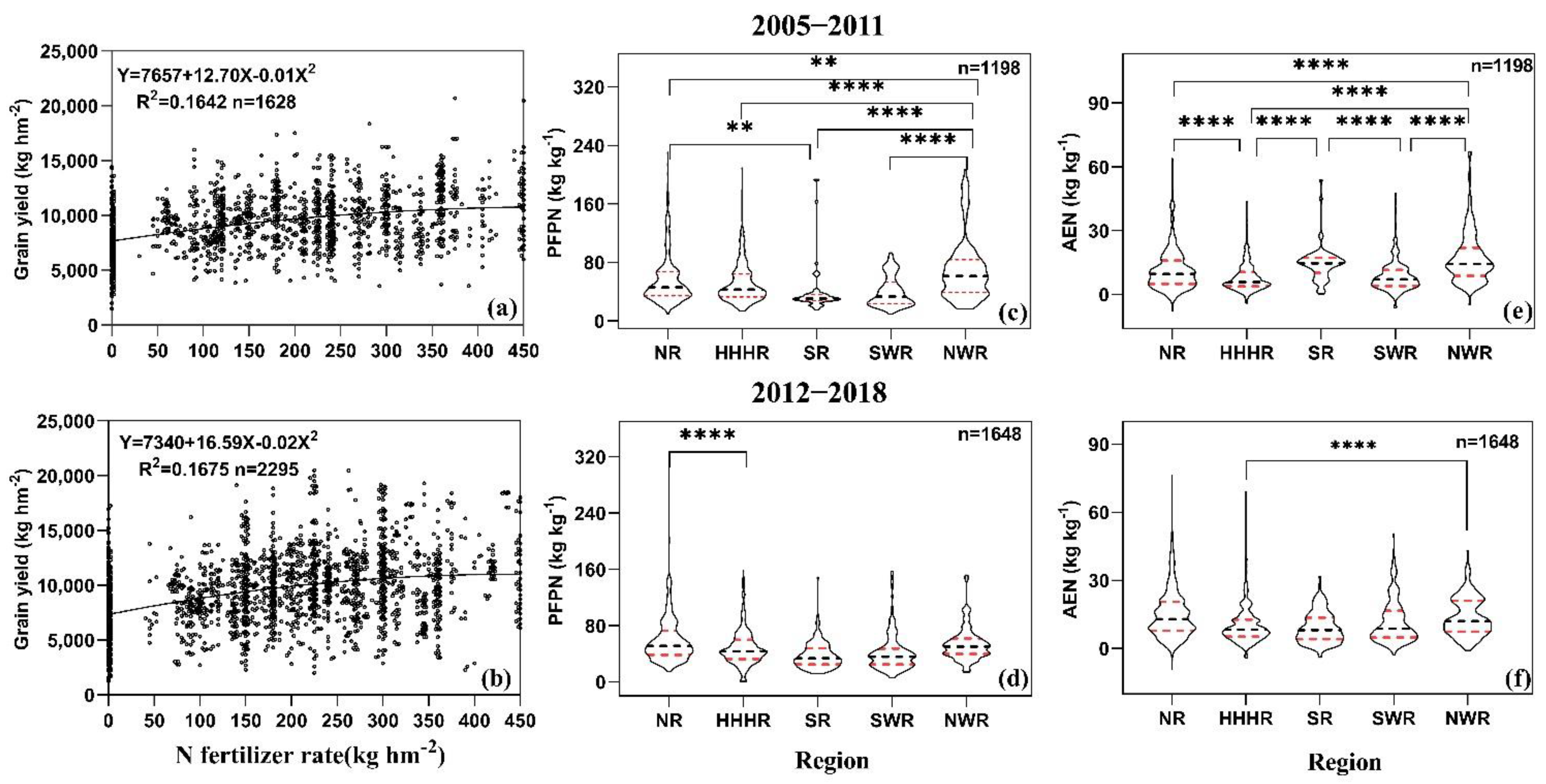
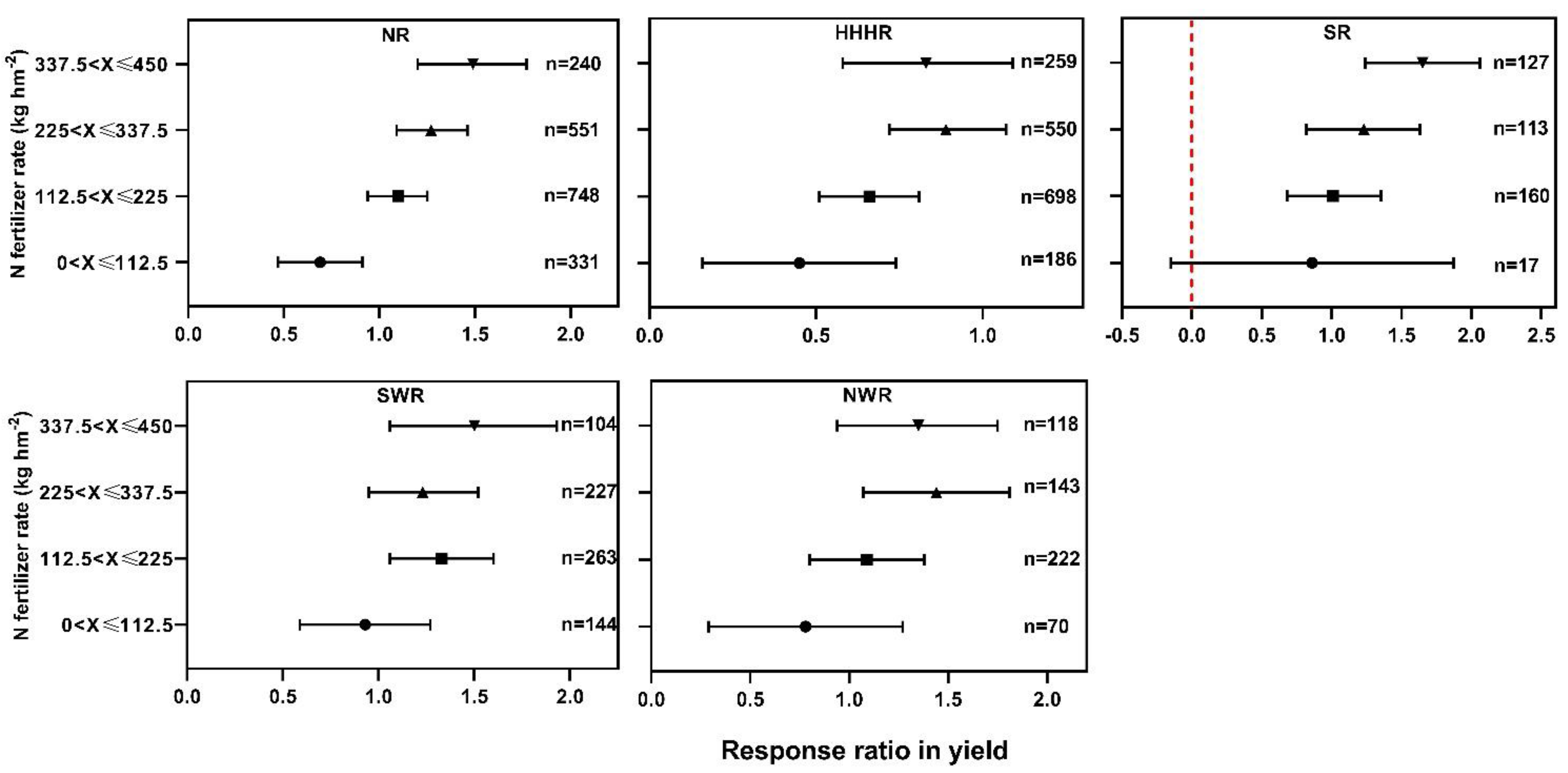
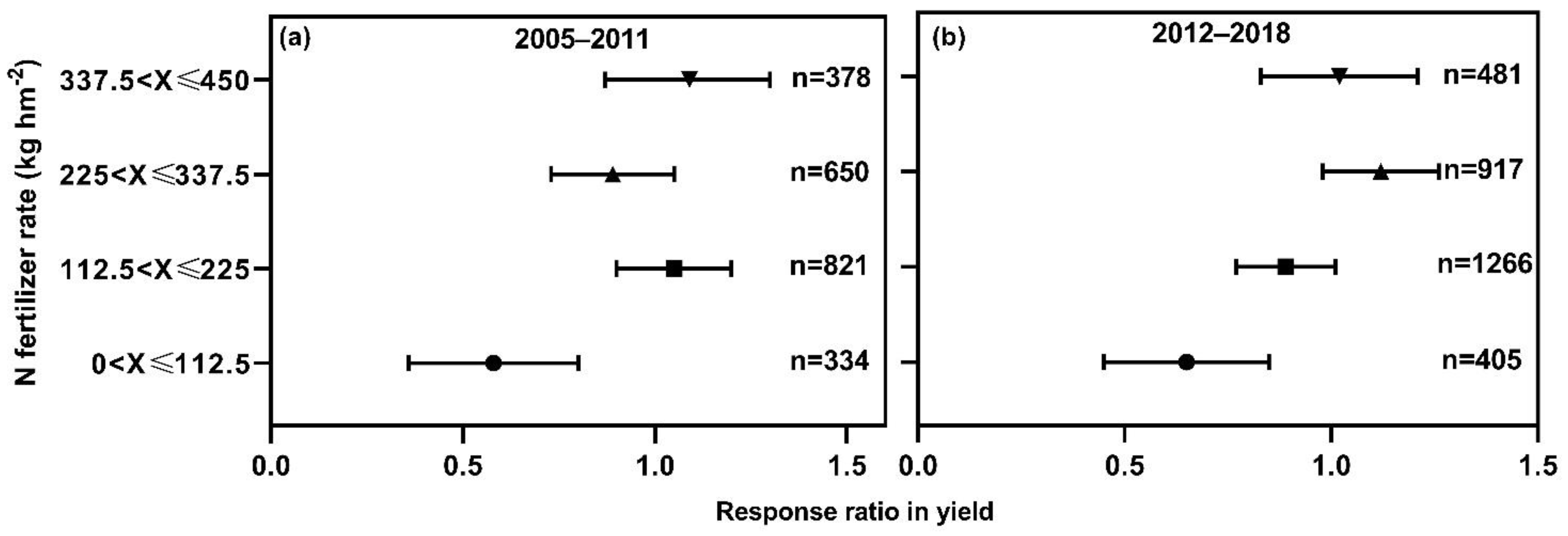
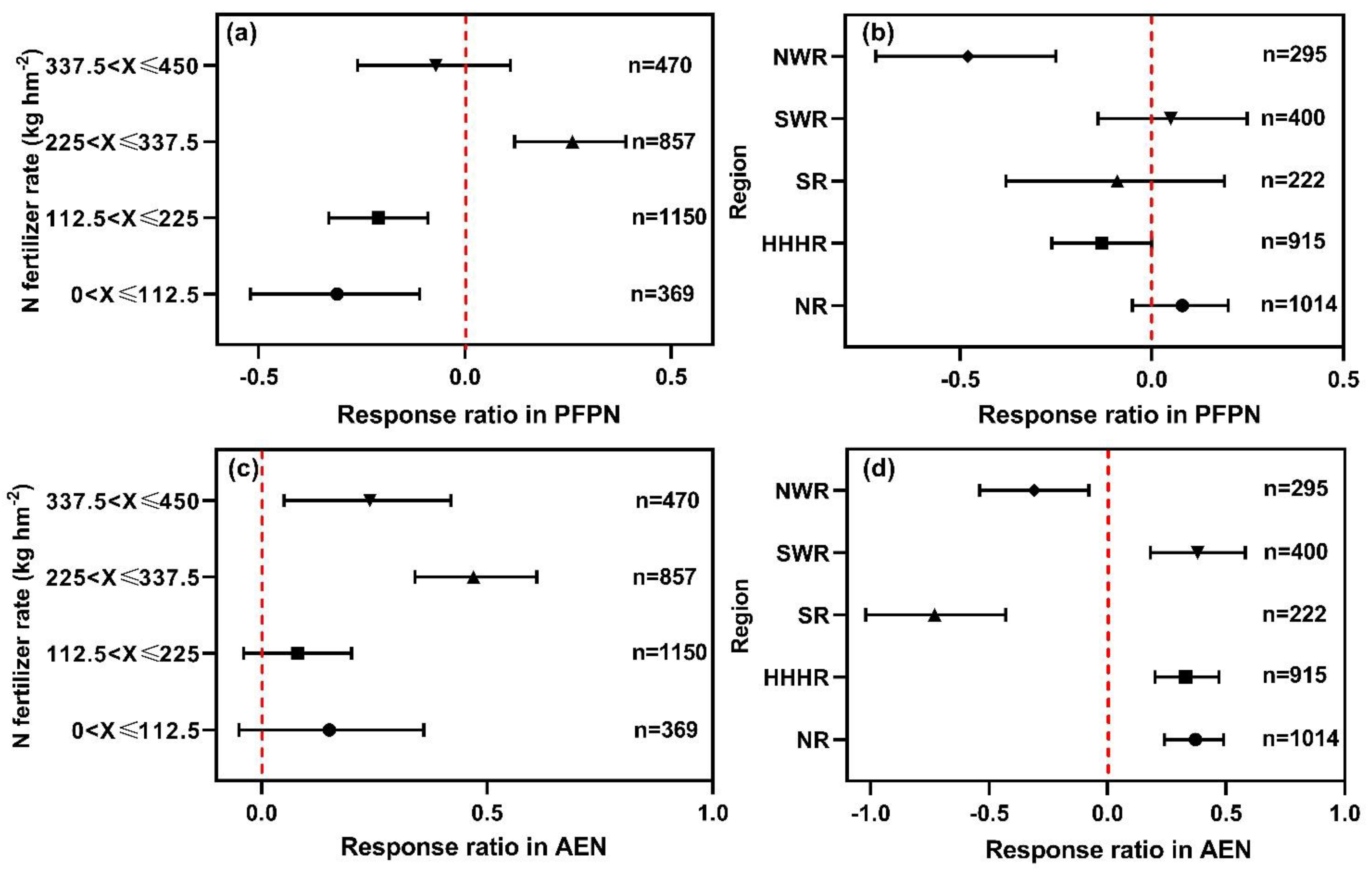
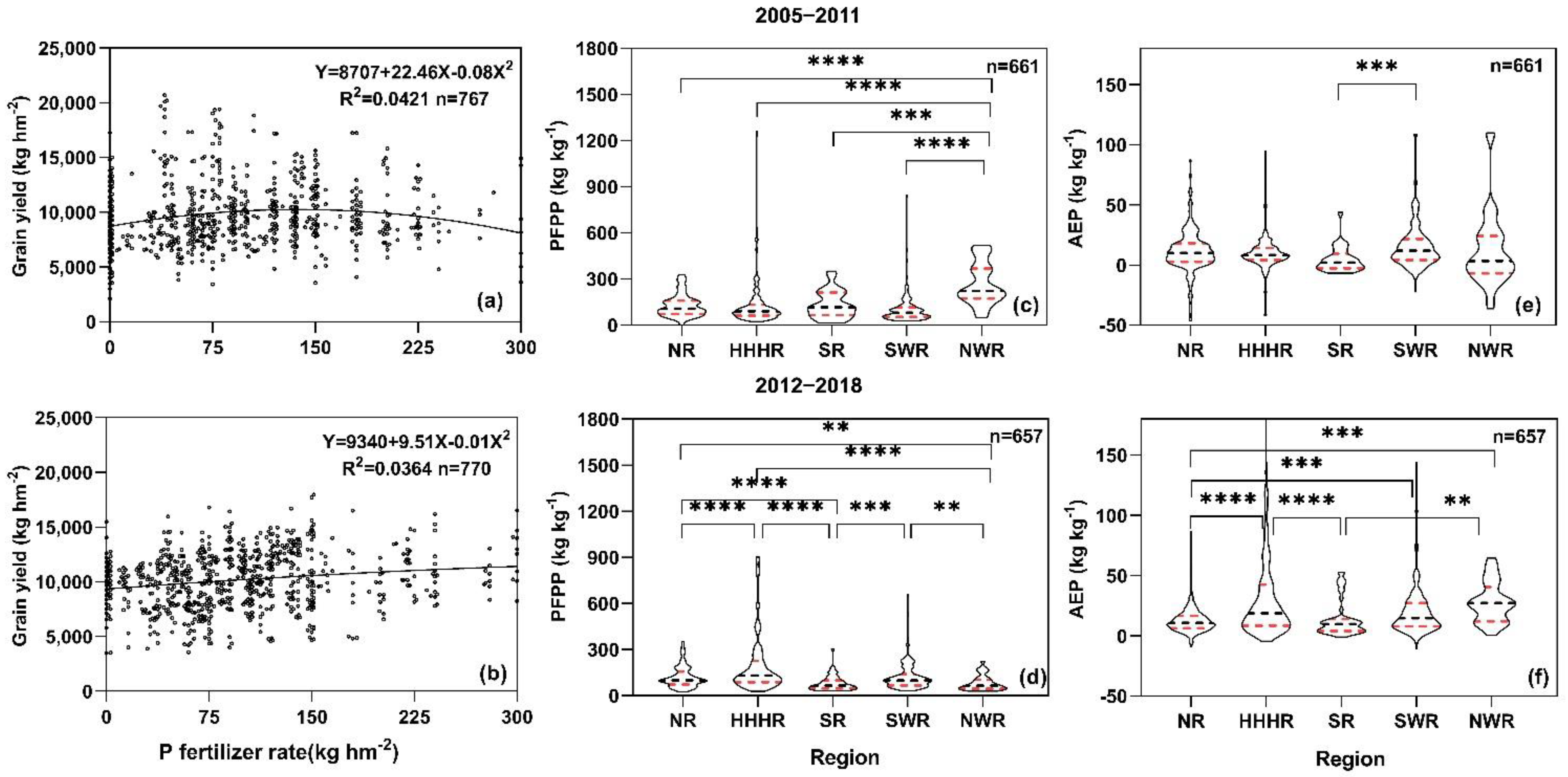
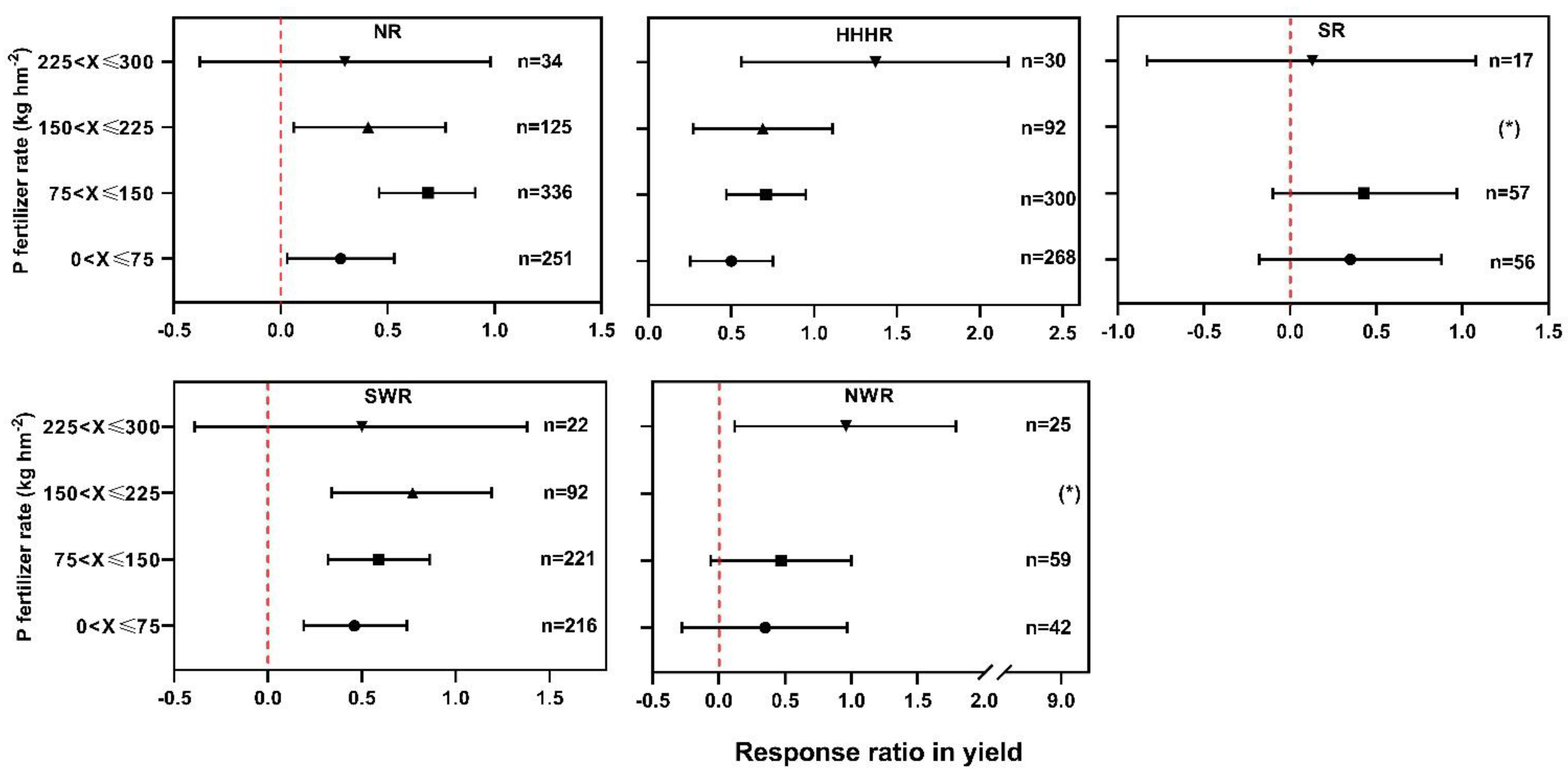
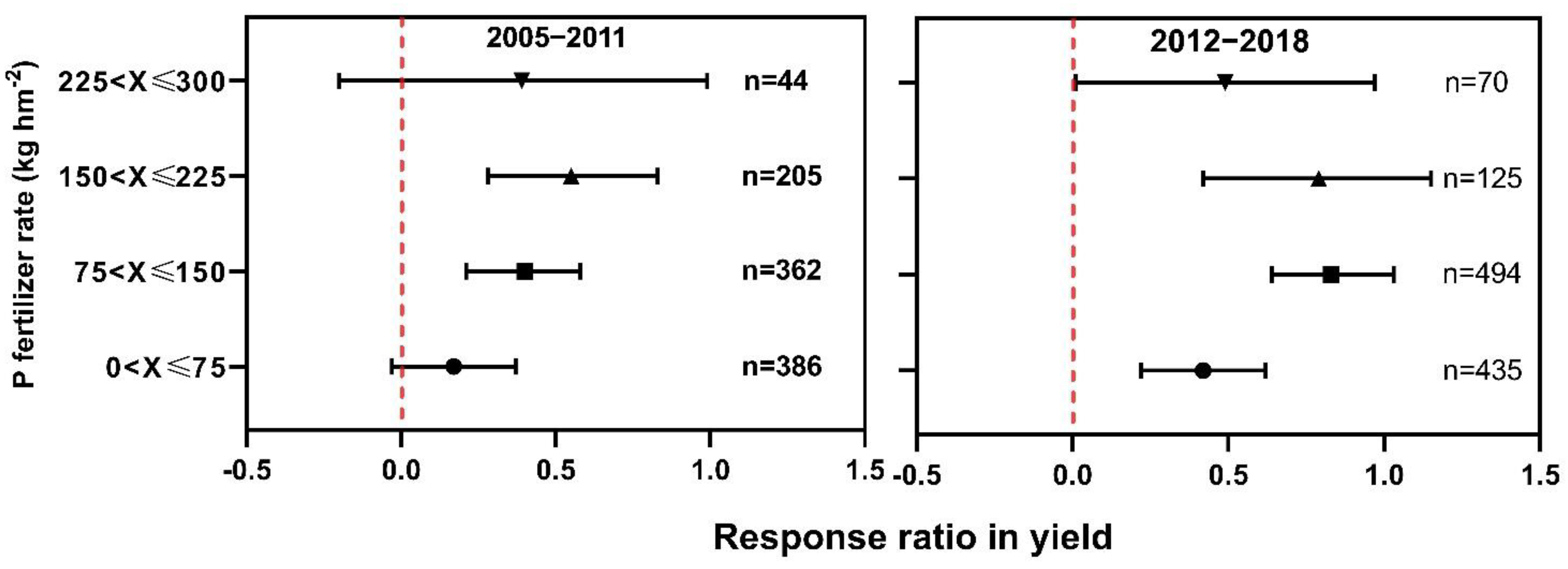
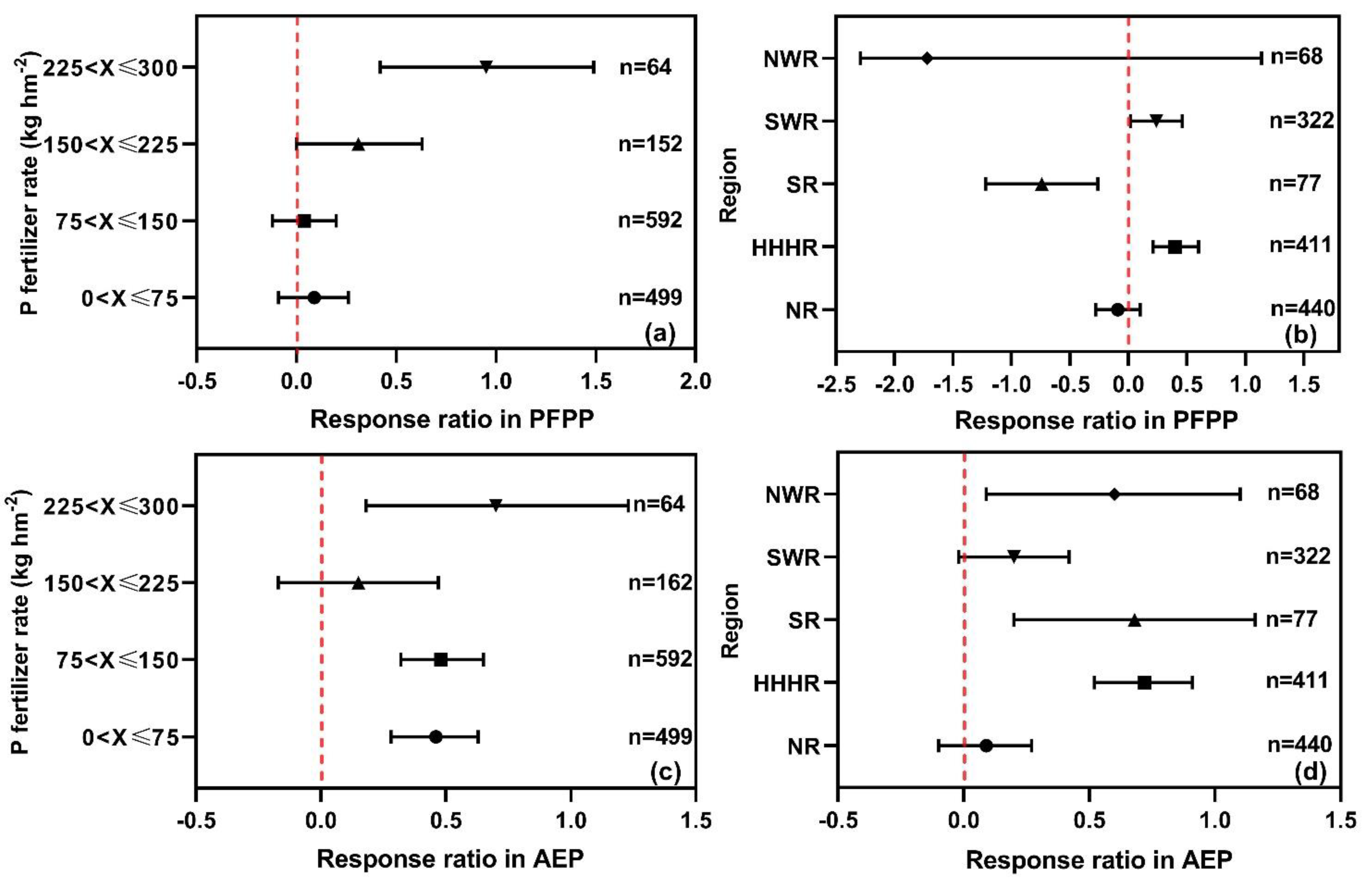

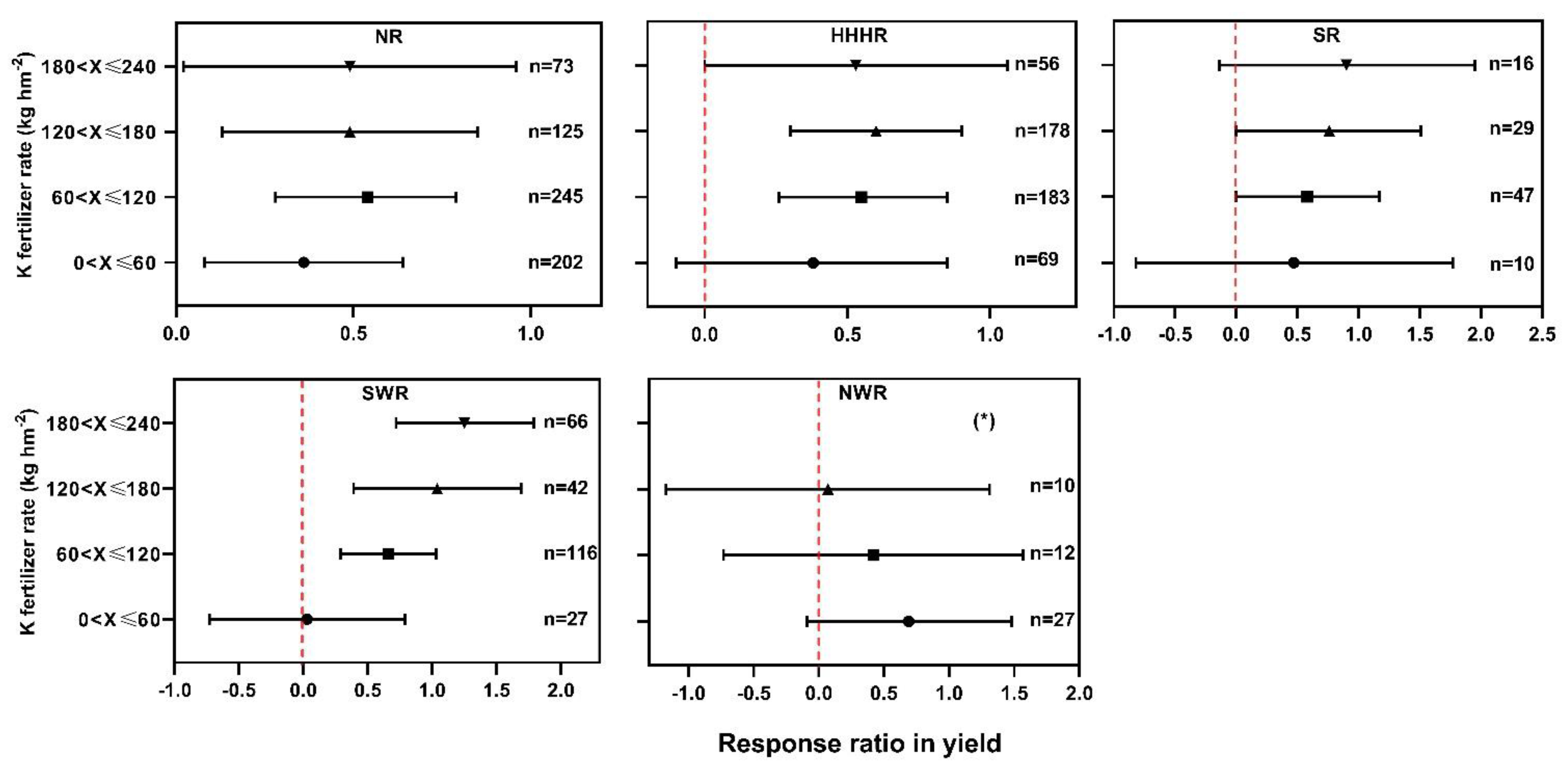

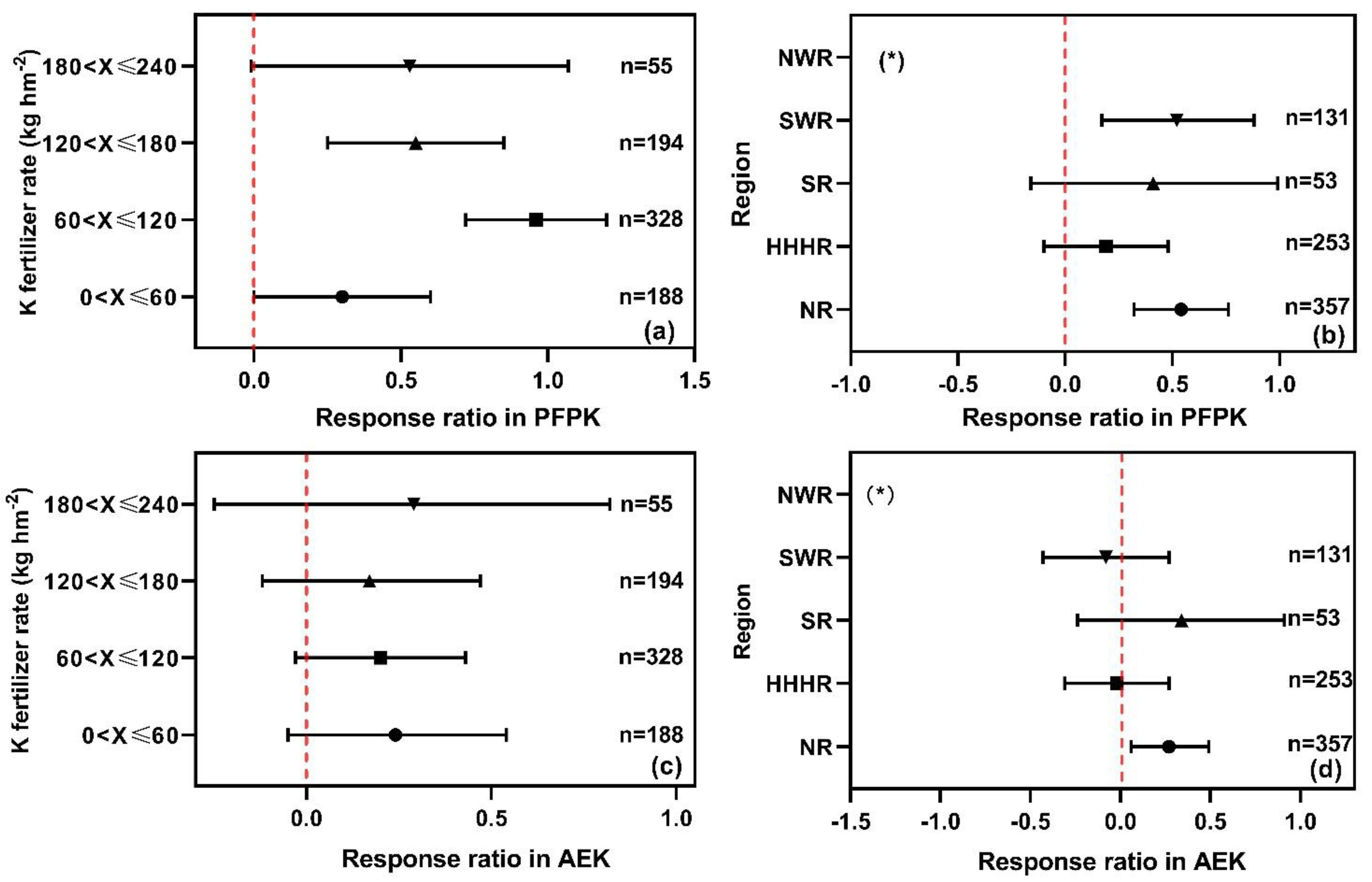
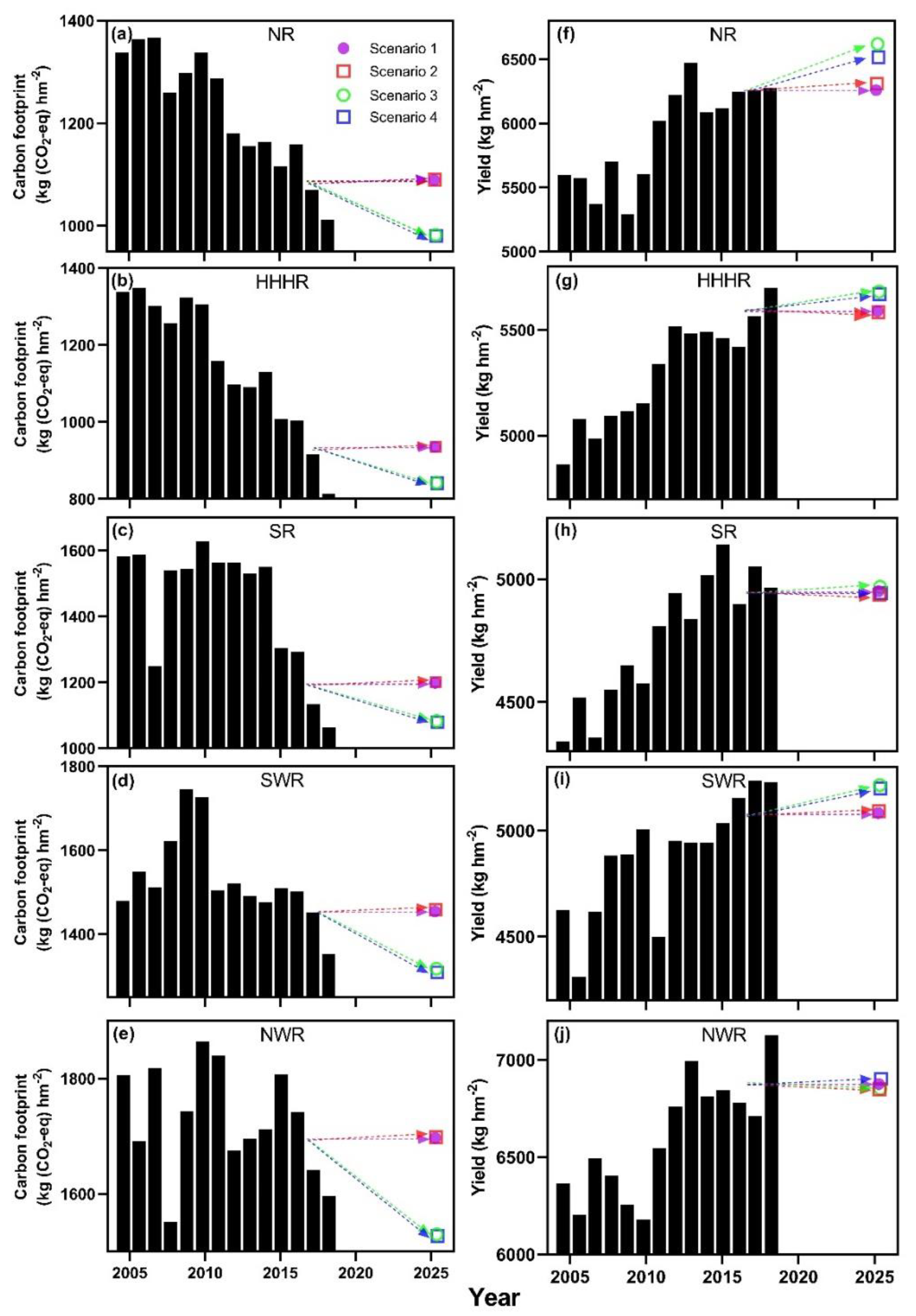
| Northern Region | Huang-Huai-Hai Region | Southern Region | Southwest Region | Northwest Region | |
|---|---|---|---|---|---|
| Sowing date | Early April to mid-May | Late April to mid-June | Mid-March to early April or | Late March to early June | Mid-April to early May |
| late June to early August | |||||
| Harvest period | Mid-September to mid-October | Late September to mid-June | Early July to late July or mid- | Late July to early October | Late September to mid-October |
| September to late October | |||||
| Average annual temperature (°C) | -1.2–12.6 | 7.0–15.4 | 14.8–22.8 | 11.3–19.0 | 3.7–9.0 |
| Average annual precipitation (mm) | 168–1120 | 307–1000 | 995–1554 | 739–1378 | 104–208 |
| ≥10 °C accumulated temperature (°C) | 1500–3499 | 3000–4200 | 4500–8413 | 3752–5865 | 2824–3795 |
| Average annual sunshine hours (h) | 922–3028 | 1285–2900 | 1968–3024 | 1000–2500 | 2710–3230 |
| Frost free period (days) | 123–212 | 149–299 | 125–212 | 215–317 | 130–201 |
| Available N (mg kg−1) | 20.5–237.5 | 13.8–174.0 | 16.3–134.0 | 14.5–167.0 | 17.1–159.0 |
| Available P (mg kg−1) | 6.6–202.8 | 5.5–84.2 | 5.8–101.8 | 2.2–97.5 | 1.4–61.3 |
| Available K (mg kg−1) | 52.0–235.0 | 19.7–254.0 | 29.5–244.0 | 43.6–254.4 | 52.3–354.0 |
| Organic matter (g kg−1) | 7.3–34.4 | 6.9–37.7 | 6.8–33.4 | 3.2–67.0 | 5.3–43.9 |
| pH | 4.6–8.7 | 5.8–8.8 | 4.5–7.8 | 4.5–8.6 | 7.2–8.9 |
Publisher’s Note: MDPI stays neutral with regard to jurisdictional claims in published maps and institutional affiliations. |
© 2022 by the authors. Licensee MDPI, Basel, Switzerland. This article is an open access article distributed under the terms and conditions of the Creative Commons Attribution (CC BY) license (https://creativecommons.org/licenses/by/4.0/).
Share and Cite
Kong, F.; Wu, Y.; Cui, S.; Wang, X.; Wei, G.; Liu, Q.; Lan, T.; Liu, F.; Zhao, B.; Feng, D.; et al. Effect of Chemical Fertilizer Application on Maize Production in China over the Past 15 Years: A Meta-Analysis. Agronomy 2022, 12, 3005. https://doi.org/10.3390/agronomy12123005
Kong F, Wu Y, Cui S, Wang X, Wei G, Liu Q, Lan T, Liu F, Zhao B, Feng D, et al. Effect of Chemical Fertilizer Application on Maize Production in China over the Past 15 Years: A Meta-Analysis. Agronomy. 2022; 12(12):3005. https://doi.org/10.3390/agronomy12123005
Chicago/Turabian StyleKong, Fanlei, Yawei Wu, Shilei Cui, Xinglong Wang, Gui Wei, Qinlin Liu, Tianqiong Lan, Fan Liu, Bo Zhao, Dongju Feng, and et al. 2022. "Effect of Chemical Fertilizer Application on Maize Production in China over the Past 15 Years: A Meta-Analysis" Agronomy 12, no. 12: 3005. https://doi.org/10.3390/agronomy12123005
APA StyleKong, F., Wu, Y., Cui, S., Wang, X., Wei, G., Liu, Q., Lan, T., Liu, F., Zhao, B., Feng, D., & Yuan, J. (2022). Effect of Chemical Fertilizer Application on Maize Production in China over the Past 15 Years: A Meta-Analysis. Agronomy, 12(12), 3005. https://doi.org/10.3390/agronomy12123005





